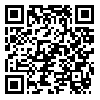Volume 12, Issue 1 (Winter 2024)
PCP 2024, 12(1): 43-52 |
Back to browse issues page
Download citation:
BibTeX | RIS | EndNote | Medlars | ProCite | Reference Manager | RefWorks
Send citation to:



BibTeX | RIS | EndNote | Medlars | ProCite | Reference Manager | RefWorks
Send citation to:
Esmaili H, Sotoudehasl N, Ghorbani R, Maheri M. Comparison of the effectiveness of Repetitive Transcranial Magnetic Stimulation (rTMS) and Drug Therapy on Obsessive-Compulsive Disorder (OCD). PCP 2024; 12 (1) :43-52
URL: http://jpcp.uswr.ac.ir/article-1-884-en.html
URL: http://jpcp.uswr.ac.ir/article-1-884-en.html
1- Department of Psychology, Faculty of Humanity, Semnan Branch, Islamic Azad University, Semnan, Iran.
2- Department of Psychology, Faculty of Humanity, Semnan Branch, Islamic Azad University, Semnan, Iran. ,sotodeh1 yahoo.com
3- Social Determinants of Health Research Center, Semnan University of Medical Sciences, Semnan, Iran.
4- Department of Psychiatry, Faculty of Medical Sciences, Shahid Beheshti University, Tehran, Iran.
2- Department of Psychology, Faculty of Humanity, Semnan Branch, Islamic Azad University, Semnan, Iran. ,
3- Social Determinants of Health Research Center, Semnan University of Medical Sciences, Semnan, Iran.
4- Department of Psychiatry, Faculty of Medical Sciences, Shahid Beheshti University, Tehran, Iran.
Abstract: (2918 Views)
Background: The use of rTMS, a form of brain stimulation, has shown to be successful and authorized for treating individuals with OCD. The study aimed to comparison of the effectiveness of Repetitive Transcranial Magnetic Stimulation (rTMS) and drug therapy on obsessive-compulsive disorder (OCD).
Methods: The study adopted a quasi-experimental method and a pre-post control group design. The statistical population of the present study included all patients referred to specialized clinics in regions 2, 3, and 7 of Tehran from July to September 2022. Study participants included 45 obsessive-compulsive disorder who were selected purposefully and were assigned to two experimental groups (rTMS: 15 participants, Drug therapy: 15 participants), and a control group: 15 participants. The rTMS treatment sessions was three sessions a week for four weeks. Therefore, rTMS treatment was performed with the parameters specified below regarding the variables of the present study. For obsessive-compulsive disorder (OCD), the supplementary motor area with a frequency of 1 Hz (HZ) for 20 minutes, 1200 pulses and the F3 and F4 areas were worked with the tablets. The MCMI-III or Checklist-90-Revision pre and post interventions measured. Data analysis was conducted using the SPSS software version 26 with an analysis of covariance test.
Results: findings showed that the differentiation between the treatment technique of repetitive transcranial magnetic stimulation (rTMS) and drug administration is significant in obsessive-compulsive disorder (P=0.0001). The decrease in obsessive-compulsive disorder based on considered repetitive transcranial magnetic stimulation (rTMS) was more than the drug therapy group(P=0.0017).
Conclusions: This study revealed that rTMS is an effective neurostimulation therapy for OCD. Therefore, rTMS provides better results in terms of treatment effectiveness and clinical response rate. Furthermore, drug treatment appears to have a significant therapeutic effect. In subgroup analysis, it was found that DLPFC stimulation and inhibition produced better treatment effects.
Methods: The study adopted a quasi-experimental method and a pre-post control group design. The statistical population of the present study included all patients referred to specialized clinics in regions 2, 3, and 7 of Tehran from July to September 2022. Study participants included 45 obsessive-compulsive disorder who were selected purposefully and were assigned to two experimental groups (rTMS: 15 participants, Drug therapy: 15 participants), and a control group: 15 participants. The rTMS treatment sessions was three sessions a week for four weeks. Therefore, rTMS treatment was performed with the parameters specified below regarding the variables of the present study. For obsessive-compulsive disorder (OCD), the supplementary motor area with a frequency of 1 Hz (HZ) for 20 minutes, 1200 pulses and the F3 and F4 areas were worked with the tablets. The MCMI-III or Checklist-90-Revision pre and post interventions measured. Data analysis was conducted using the SPSS software version 26 with an analysis of covariance test.
Results: findings showed that the differentiation between the treatment technique of repetitive transcranial magnetic stimulation (rTMS) and drug administration is significant in obsessive-compulsive disorder (P=0.0001). The decrease in obsessive-compulsive disorder based on considered repetitive transcranial magnetic stimulation (rTMS) was more than the drug therapy group(P=0.0017).
Conclusions: This study revealed that rTMS is an effective neurostimulation therapy for OCD. Therefore, rTMS provides better results in terms of treatment effectiveness and clinical response rate. Furthermore, drug treatment appears to have a significant therapeutic effect. In subgroup analysis, it was found that DLPFC stimulation and inhibition produced better treatment effects.
Type of Study: Original Research Article |
Subject:
Rehabilitation
Received: 2023/04/8 | Accepted: 2023/08/30 | Published: 2024/01/14
Received: 2023/04/8 | Accepted: 2023/08/30 | Published: 2024/01/14
| Rights and permissions | |
 |
This work is licensed under a Creative Commons Attribution-NonCommercial 4.0 International License. |








